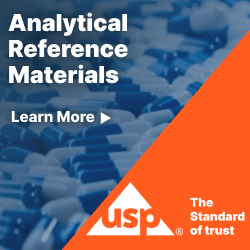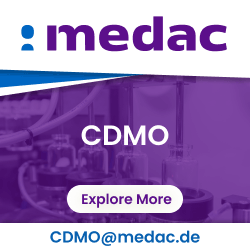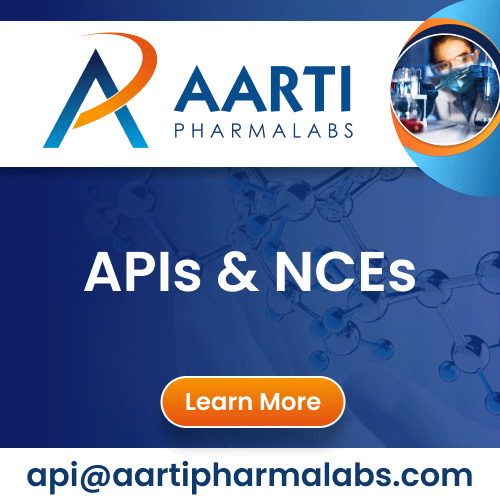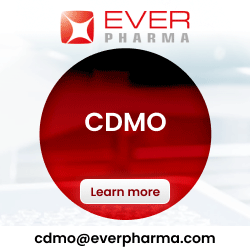Looking for reference standards for drug substances? Find a CMO, CDMO offering primary standards & secondary reference standards on PharmaCompass.
Q1. What are drug reference standards? How are reference standards qualified?
Reference standards are well-characterized and highly purified compounds that are essential for validating the quantitative and qualitative accuracy of analytical testing. Drug reference standards are used in testing by pharmaceutical and related industries to help ensure the identity, strength, quality, and purity of medicines, dietary supplements, and food ingredients.
Pharmaceutical reference standard materials (RSMs) are selected from a particular batch. After assigning its batch number its characteristic properties are documented for reference purposes and comparison with future drug lots. The integrity of pharmaceutical reference standard materials (RSM) must be proven for drug products that are used in registration applications, commercial releases, stability studies, or pharmacokinetic studies.
A drug reference standard in pharmaceutical industries may be used as a measurement base for substances such as Active Pharmaceutical Ingredients (APIs). Thus, reference standard qualification, development, characterization, and management is critical for companies working to deliver safe and efficacious therapeutics.
Qualified reference-standard materials provide proof of continuous quality of starting materials and drug substances, and allow monitoring of other substances including excipients, API impurities, and byproducts throughout the drug production process. Reference standard qualification techniques may include spectroscopy, chromatography, calorimetry, compendial methods, etc.
Primary standards come with a certificate of analysis and bear traceability to a globally recognized standards body. Primary reference standards or compendial reference standards in pharmaceutical industries are obtained from pharmacopeias such as the United States Pharmacopeia (USP), European Pharmacopeia (EP), Japanese Pharmacopeia (JP), Swiss Pharmacopeia (SP), etc. Regulatory agencies will accept reference-standard materials from a pharmacopeial source and NIST without further qualification.
A secondary standard or a non-compendial reference standard on the other hand is qualified against a primary one. Secondary reference standards are produced by contract manufacturers such as contract manufacturing organizations (CMOs), contract development and manufacturing organizations (CDMOs), custom manufacturers, etc.
Secondary standards are prepared to routinely control drug product lots for Quality Control purposes, such as biological assays and physicochemical testing. It is always calibrated against the in-house primary reference standard or a compendial reference standard.
Q2. What is the difference between primary and secondary reference standards? When is the primary standard used?
A reference standard in pharmaceutical industries, or a pharmaceutical reference standard material (RSM), is prepared for use as the standard in an assay, identification, or purity test. It is often characterized and evaluated for its intended purpose by additional procedures other than those used in routine testing.
As seen above, depending on the source of the reference-standard material, they can be classified into primary and secondary reference standards. Primary standards and secondary standards and their applications are explored in detail below.
Primary Reference Standard
Primary standards are highly purified compounds or chemical drug substances that are accepted without reference to other standards. No testing is required for primary reference standards and they can be used directly without further reference standard qualification. A primary reference standard should be prepared from lots representative of the drug production and clinical materials.
The primary reference standard should be of highest possible purity and should be thoroughly characterized to ensure its identity, potency, purity, quality and strength. They may be obtained from official sources including USP, NF, BP, and EP or they are manufactured in-house.
Some Uses of Primary Reference Standards:
- A primary standard is a reference chemical used to measure an unknown concentration of another known chemical.
- Primary standards are typically used in titration to determine unknown concentrations and in other analytical services such as analytical chemistry techniques.
- Primary standards are also used in analysis involving assay, identification or purity tests.
Secondary Reference Standard or Working Standards
As per the European Pharmacopoeia, a secondary reference standard is a standard established by comparison with a primary standard. The FDA, USP and EP all recognize the use of secondary standards or working standards that are established with reference to the corresponding primary standard. Secondary standards are supported by a Certificate of Analysis (COA) which includes the mass balance, applicable traceable assays, and characterization information.
Some Uses of Secondary Reference Standards:
- A secondary standard may be used for routine quality control purposes for any of the uses described above for primary standards provided that it is established with reference to the primary standard.
- It may also be used for verification of a routine method if shown to be commutable.
Various CDMOs, CMOs, custom manufacturers, contract manufacturers, etc. offer primary and secondary reference standard materials, reference standards for biopharmaceutical products, reference standards for APIs and impurities, etc. They can also provide clinical development, pharmaceutical drug development and drug production services such as reference standard development for APIs, reference standards for therapeutic proteins, analytical services, API manufacturing, drug-product manufacturing services, etc.
Q3. How are Reference Standards (RS) characterized?
Reference standard characterization studies are used to determine the physicochemical profile of a drug substance or product in order to establish a standard for subsequent stages of testing. This testing is essential for characterising and analysing both original biologics and biosimilars. Characterization processes focus on the accurate chemical and structural identification of a reference material, as well as an assessment of purity.
A well characterized reference standard is essential to ensure consistency between different batches of Investigational medicinal products. Primary reference standards obtained from Pharmacopeias or other national agencies are examples of well-characterized, highly purified compounds.
Impurities classified as organic, inorganic, or residual solvents can be introduced during the drug-product manufacturing process for the drug substance, drug product, or excipient and through storage of the material. API impurities should be characterized and controlled throughout the drug manufacturing process.
Characterization studies often demand a broad variety of techniques and instrumentation for a complete analysis of drug purity, identity, and stability. Some techniques used for the characterization of Reference Standards (RS) are noted below.
- Minimal required tests for initial characterization of drug substances or APIs reference standards are typically performed by conducting tests for quantifying organic impurities, metal impurities, noncombustible impurities, residual solvents, water content, structural confirmation, etc.
- Characterization studies may be performed to test the identity, primary structure, purity, secondary structure, tertiary structure, potency, strength, biosafety, etc. of drug substances and drug products. A combination of testing methods such as chromatography, LC-MS/MS, HPLC, assay, etc. may be used to achieve characterization.
- The level of characterization depends on the intended use of the reference standard. For example, a reference standard used to determine potency requires full characterization and qualification. Whereas, a reference standard used as a resolution component or identification requires less discerning analyses.
- In-house reference standards are characterized by procedures including routine and beyond routine release testing, and orthogonal methods for reference standard characterization should be considered.
Q4. Which are the different companies offering pharmaceutical reference standards?
There are many companies in the pharmaceutical industry, such as CDMOs, CMOs, custom manufacturers which offer reference standard development for APIs (ie. APIs reference standards), intermediates, excipients, biologics, dietary supplements, reference standards for therapeutic proteins, reference standards for biopharmaceutical products, etc. Some of them and the pharmaceutical development and manufacturing services they offer are noted below.
USP - Biologics / Excipients / Impurities / APIs Reference Standards
USP offers primary standards to ensure quality in pharmaceutical development and manufacturing. USP's reference standards are rigorously tested and evaluated by multiple independent laboratories including USP, commercial, regulatory and academic labs.
USP currently offers more than 3,500 reference standards - highly characterized specimens of drug substances, active pharmaceutical ingredients (APIs), excipients, food ingredients, impurities, degradation products, biologics, dietary supplements, compendial reagents, etc. It also provides reference standards for therapeutic proteins and reference standards for biopharmaceutical products for pharmaceutical drug development and drug production.
Aozeal Certified Standards - Pharmaceutical Reference Standard Development for APIs
Aozeal Certified Standards (AOCS), Inc. is a contract manufacturer and supplier of pharmaceutical reference standards, such as drug working standards, API impurity reference standards, drug metabolites and stable isotope labelled compounds for pharmaceutical drug development.
AOCS is striving to become the world's leading contract manufacturer of pharmaceutical impurity reference standards and preferred business partner for reference standards and R&D services in the global pharmaceutical industry. Aozeal is thus a leading supplier of reference standards for APIs and impurities.
Cayman Chemical Company Inc - Fully Characterized Reference Standards
With 40 years of experience in the synthesis, purification, and characterization of biochemicals, Cayman has become a leader in the field of designer drugs by providing high-purity reference standards to federally licensed laboratories and qualified academic research institutions for forensic analytical services. It offers reference standards for APIs and impurities.
Its contract services group helps companies turn their new drug ideas into reality. Whether for clinical phase I, phase II, phase III, or toxicology studies, they specialize in developing new synthetic routes while providing all necessary support to ensure regulatory compliance.
Maithili Life Sciences - Reference Standard Development for APIs and Intermediates
Maithili offers pharmaceutical development and manufacturing services for Active Pharmaceutical Ingredients (APIs), intermediates and fine chemicals. It also offers quality management services which meet the highest standards of quality and purity.
Maithili undertakes custom synthesis of key intermediates along with API manufacturing for innovator companies worldwide. They have expertise in synthesizing diverse classes of molecules and offer gram to ton quantities in a cost-effective manner.
Topchem Pharmaceuticals - Reference Standard Development for APIs
Building on their experience of API development and API manufacturing, Topchem can supply impurity reference standards, metabolites and related research materials. Using their supply chain network they generally source advanced intermediates to facilitate rapid and cost effective supply of these materials.
All Suppliers
















 USP reference standards; highly characterized specimens of drug substances, impurities, excipients, degradation products & more.
USP reference standards; highly characterized specimens of drug substances, impurities, excipients, degradation products & more.




